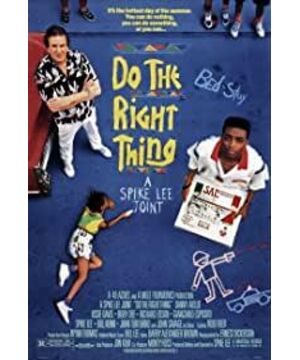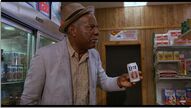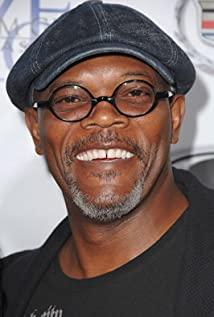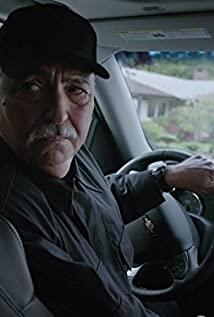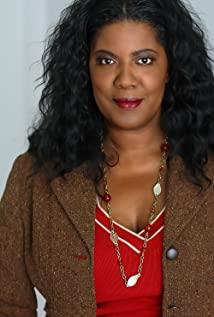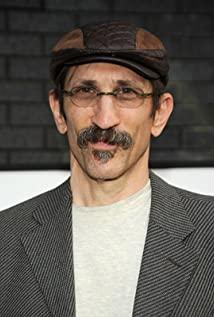Text: Jonathan Rosenbaum Translated by: LiM
I can't say I'm already an absolute Spike Lee fan. His talent for building momentum tends to outweigh his talent as a screenwriter, director, and actor. And, to the public, his popularity in the TV business is higher than his two works, "Surely Win" (1986) and "Black School" (1988), which also shows that he is very good at running both ends, which also leads to It has become difficult to evaluate his work. In a nutshell, he is a black filmmaker with an all-black cast in his first two works, and these facts make him overrated in some areas, but at the same time misunderstood and/or in others. or underestimated.
Finished in just 12 days and on a budget of $175,000, there's a certain sincerity to "Stand Ahead"—the lead's endearing acting, energetic dialogue, and Ernest Dixon's excellent black-and-white photography. But the extremely powerful lesbian character Opie is designed to be unreasonably annoying, and the brisk plot and one-sided characters—most of them are—make the whole look so thin that the film just ended, Memories of it have almost disappeared without a trace.
"Black College" is more ambitious: it tackles bigger themes (set at a black university in Atlanta, about the volatile political divisions and differences between groups on campus), and its style Be bolder - try to structure the whole theme in a musical comedy way. But even so, we have to admit that there is a discrepancy between the film's bold intentions and what it actually achieves. Although the content is undeniably new, it has to be said that its music lacks polish and passion, the whole film lacks focus and coherence, and the directorial level and clumsy script make the overall look casual.
Despite these two firsts, it's an unexpected qualitative leap for "Do It Your Way," which is easily the best American film of the year so far. In fact, it's the only movie since the summer that respects audiences, makes them think, and doesn't give up in the slightest to entertain and inspire them. In general terms, if "Successful Victory" sacrifices content for style, and "Black School" sacrifices style for content, "Do As You Should" easily integrates the two.
Doing It All framed all the action on a hot summer day on a block, incorporating what Spike Lee had done in the first two works; the film's treatment of characters marked the He has stepped into the professional ranks. The film is of course complex, covering all aspects of racism, without a bit of goofy complacency, nor the moralism of Mississippi Burning - self-righteousness; it's a film without heroes There is no villainous film either, it manages to observe the whole social process with a series of reflections and understandings.
The key to the film's success is its dialectical presentation of the neighborhood's neighbors, refusing to limit the film's point of view to any single character. Spike Lee's role in the film, a pizza delivery man named Muzzi, is more central than his roles in "Better Chances" and "Black School." But Muzzi's point of view is not the same as that of the whole film - in fact, the title of the film "Do as it should" has a different meaning for each character. Like "Half Pint" in "Black School," Muzzi gradually steps into the crossroads of the film's main conflict; like Spike Lee himself, he traverses both sides of the street as a living embodiment of the principles of dialectics. But he no longer stands above the other characters as the voice of the film's point of view.
The whole film tells how small racial incidents accumulate and eventually lead to violence. A series of seemingly unplotted events are actually consciously and compactly constructed. Clearly, the three most important black characters influencing the course of the conflict—Bug, Radio, and Laughing—all belong to the marginalized of the black community. Both of their grumbles are justified, and in some way provoked by Sal, the owner of the neighborhood pizzeria, by his racist son, or by the two of them.
Strictly speaking, Doing The Right Way isn't a realistic film—a fact that's as important as the film's strategy. Li knows the place he chooses to talk about, and many of the neighborhood characters seem to be drawn directly from life, such as the stuttering laughing boy, the three funny things that sit on the side of the road all day and point fingers at passers-by, and the big The mayor and Mammy Heath are elderly bystanders. But Lee explains it all in a massively cinematic way; his depiction of the ethnic community helps the film's design, but it's by no means exhaustive. One of his whimsical departures from realism appears in a panning shot of some newspaper headlines. The New York Post is chanting "Oh hoo!", while the New York Times is saying "Yeah, it's hotter, hotter, you're going crazy!", which seems more like "Turkey!" Strange idea from the Avery cartoon.
Already, critics have pointed out that there are no drugs or any suggestion of drugs in the film. Drugs also didn't appear in Lee's first two works, and "Surely Win" even listed a title in the credits at the end of the credits: "This movie has no curly hair!!! No drugs!!!" Lee has rightly pointed out, No one would think to criticize a Wall Street movie without drugs: our demands for "realism" often carry double standards and veiled sentiments. (It's worth noting that the crew of "Do It Right" managed to shut down an illegal drug exchange on the block for eight weeks of filming. As local residents did in St. Clair Burn's excellent documentary " As mentioned in Making
The film's dialectical structure and non-realistic approach are emphasized from the outset. The movie begins with one of the main characters, Tina, dancing to the public enemy's Fight the power , which is pretty much the studio version of the whole story setting. Tina danced in a boxer outfit, a red skirt and a blue bodysuit. This blatantly unreal element remains an implicit reference point throughout the film without detracting from the authenticity of the film's theme; it is merely a reminder for the audience to imagine how it is related to what happened. A connection between, a connection that has been thought and analyzed, and an emotional connection.
The same is true for the film's dialectical ending, which ends with two pertinent introductions: one by Martin Luther King Jr., affirming the infeasibility and immorality of violence; the other by Malcolm X, Illustrating the feasibility and "wisdom" of self-defense, two quotations follow a photo of the two black leaders that plays a pivotal role in the film's plot. Although this is an understatement, the importance of a pair of dialectics should not be overlooked: Tina opens with a boxing glove that "represents" Malcolm X; In the middle-class attire of the Doctor, her dancing is also less combative. As Tina wears a red dress and blue bodysuit, she begins to look more and more like Muzzi's sister Jade. Jade has a tendency to jump: she's respected in Sal's pizzeria, treated like a queen, and more middle-class than any other black character in the film. And Tina—the girlfriend of Muzzi and the mother of his son Hecht—seems like a more radical working class, angry and fickle, even harder to assimilate to the middle class than Muzzi. The film's dialectical vigilance and sympathy for both sides makes it extremely rich and informative - it's not choosing between classes, between Dr. King and Malcolm, but about everything they can. Words spoken express understanding and appreciation.
This pattern of contrasts abounds in the film. Two of Sal's children also work in the pizzeria: Pinot is more obnoxious and racist, while Vito is caring and likable; they form two sides of their father's personality. The two shops on the block are across the street, Sal's Pizza and Korean Grocery—both where the majority of customers are black and Hispanic, and neither is owned by black and run by the Spaniards. One of the film's main arguments stems from Sal's Wall of Fame -- the living room's wall is filled with pictures of well-known Italian-Americans, but blacks are not included -- which Bug Boy felt. The thing was unbearable, and this little thing led to the final violence. And in keeping with the complexity of the film's theme, local DJ Mr. Love Daddy has also displayed his own "Wall of Fame" -- chanting a string of well-respected, famous black musicians and singers' names on his radio show -- albeit without Alluding to its connection to Sal's Wall of Fame.
The status and behavior of individual roles also change dialectically. When the Mayor first appeared, he was of the lowest status in the black community, and the film treats the burly alcoholic as affectionately as in Raoul Walsh's Strawberry Blonde (1941). Like Alan Hale. But the mayor saved the life of a 10-year-old boy when he was almost run over, making him something of a patriarchal and spiritual leader in the community. This is also the case with the ambiguous romantic relationship between the Mayor and Mammy Heath. In the film, the two white police officers are very cruel and harsh to the local black people, but in a previous racial incident, they were relatively mild and tolerant.
Karl Marx wrote in "The Eighteenth Brumaire of Louis Bonaparte": "Hegel said somewhere that all the great events and figures of world history appear twice, so to speak, and He forgot to add: the first time as a tragedy, the second time as a joke." One of the most clever organizing principles of "Do What You Should" is to turn Marx's dialectical formula upside down— Coaxing audiences into thinking it's a straight-up comedy makes the disaster at the end seem more powerful - so what seemed at first gibberish turned into tragedy.
The dialectic of the whole thing is that when it comes to understanding what happened during the day, Spike Lee didn't take sides, and he didn't ask us to take sides. Of course, that doesn't mean he has the same sympathy for Pinault and Muzzi, but it does mean he sees them both more clearly and objectively. Car Wash (1976), also a black-starred film, is relatively light, content to reduce the white character to a seemingly amorous stereotype—and a satire, by which A cunning reversal of the treatment in most Hollywood films. Doing The Right Thing eschews racial stereotypes entirely, and generously makes all of the characters fit in without ignoring anyone's flaws.
Unlike Nashville (1975), which had a more extravagant lineup—singer Brenda Lee once called it "a collage of dialectically unreality"—Spike Lee's film's basic discourse leaves that out. Condescending mockery and clichés. The most trite aspect of "Nashville" is the American flag—"real" means summing up its diverse perspectives in detail. It inserts the flag into the credits, as if to give it some general meaning: not so much a final statement, but some sort of posturing. Corresponding to this design is Malcolm posing with Dr. King in "Doing the Right Way," but Spike Lee sees it not as the end, but as the beginning of a conversation. The last time we saw this photo was on the wall of a looted, gutted, and burnt pizzeria, when Smiley posted it with triumph and grief at the same time. And when it reappears after the quotation, it becomes a moving symbol of the future and the past.
Formal dialectics are blended into Spike Lee's compositions, camera movements, and editing. A grand rising shot moves up from Mr. Love Daddy's radio base (suspected to be wrong, the author seems to have mixed the two rising shots at the beginning and the end, annotation), and its hum floats in the community, like a Greek The melody of the choir, which serves to emphasize the connection of his message to the outside world. By contrast, a quick, caricatured close-up of several characters spraying some racial and ethnic epithets into the camera, choreographed like a piece of music, cuts the community apart abruptly. An isolated unit. (Muzzi: "You Italian ghost, garlicky, pizza-hanging pasta, Vic Damon, Perry Cuomo, Pavarotti who can't sing" Pino: "You big gold-toothed , golden chain baboon, monkey eating fried chicken and biscuits, baboon, big ass, fast guy, high jumper, tender guy, slam dunk guy, round head boy, shovel head") after a brief social environment account, it is a period of The short, wayward fantasy sequences—all characters trapped in a place of isolation, without exception—are cut-outs that reinforce their similarities as well as their isolation.
In addition, Spike Lee makes a striking distinction between depicting social conflicts with action shots and those depicted with reverse-angle clips. Throughout the film, the radio swaggers around in his brass knuckles emblazoned with "love" and "hate," and repeats "Fight the power" from his loudspeaker. In one episode, he encounters several Hispanics playing Latin music on their speakers. They were more realistic in the volume of their respective music, and it was the absence of the radio that relieved the tension. Throughout the standoff, with footage going back and forth between the cannon and its owner, Spike Lee points out with this long shot around the entire event that no matter how different the radio may be from the Hispanic group, they always coexist in the same space. . And then to that climactic racial incident, where Muzzi was motivated by what several friends had to say, and the scene was captured by a single wide-angle shot — the same shot as the TV interview with the soldier in "Full Metal Jacket" lenses are very similar. Both of these examples, along with the upward-moving shot of the radio base station, allude to the scene of uninterrupted communication depicted by the action shot.
But when the conflict was no longer just cultural and ideological, but racial, Spike Lee began to repeatedly switch shots between the opposing sides, isolating them in segmented shots and frames among. At the climax, including the radio, the enemy is framed in an isolated oblique shot, creating a sense of spatial imbalance and implying that there is no more dialogue to speak of, it's all a mess, In this space, the shot forms a steep slope, and both groups are sliding down—albeit in different directions.
Spike Lee's stylized scheduling doesn't appear too stylized and unnatural; much of it is integrated into its own dramatic scenes, and it takes some work to tease them out of their respective passages. There are some passages that seem captured and contrived, however, and that's because of the overly rushed, distracting music—a score by the director's father that permeates almost the entire film. The problem is not the music itself, but that the function it performs is often redundant. The porch conversation between Ossie Davis and Ruby Dee is moving enough without the Hollywood strings to the suave Stephen Foster tune; A piece of music is inserted into the final conversation between the two, which is even more superfluous. Given that Spike Lee's next work, Jazz Style, is relevant to jazz musicians, hopefully he can figure out how to use music more restrainedly.
Aside from that flaw, Doing The Right Way doesn't go wrong—even though the actions it describes are nothing more than the accumulation of countless small mistakes across the community. In the world the film builds, where everyone is right and wrong, it brings laughter and tears; and Spike Lee, who travels back and forth across the block, sees it all happen.
View more about Do the Right Thing reviews


